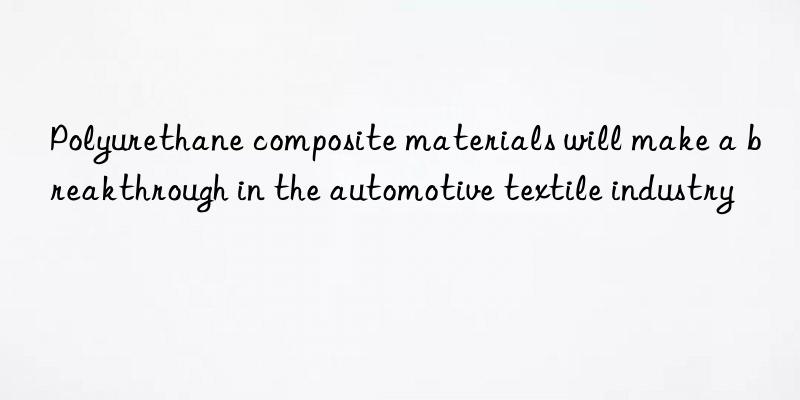
In the field of automobile manufacturing, the perfect combination of light weight and high bending strength has played a key role in the breakthrough development of polyurethane fiber composite materials. The floor of the new Mercedes-Benz A, B and S cars produced by Intier Automotive Naher GmbH in Rastatt, Germany, is precisely the material used in the trunk floor; the load-bearing floor of the Opel Meriva and Opel Corsa produced by Grupo Desarrollo Empresarial S.L.U. in Spain The support is also made of polyurethane fiber composite.
Dirk, an expert on polyurethane composite objects of the American Nonwoven Industry Association, pointed out that due to the improvement of polyurethane materials and production methods, the performance of these polyurethane fiber composite materials has been further improved.
Lightweight Parts Bareg
Only moderate deformation under heavy load
Germany's Bayer Group has recently launched a polyurethane fiber composite lightweight component Bareg for automobiles. The material consists of a lightweight honeycomb layer and two outer layers of two-component heat-activated polyurethane system fibers on both sides, and is directly compression molded in an environment of about 130 °C. The resulting components will weigh slightly less than 3 kg/m², a weight reduction of up to 60% compared to the same components made of conventional materials such as wood or steel. It is precisely because the thickness of the outer layer is only 0.4 mm to 0.6 mm, and it is reinforced with fibers, and the elastic coefficient of the outer layer is about 13000Mpa, so the component only deforms moderately even when it is under heavy load.
Bayer Group polyurethane processing technology expert Wirtz said that this work aims to improve the overall plasticity and component quality of key parts such as edges and support points, so as to ensure that attractive products can be processed without trimming. These measures allow, for example, a variation in wall thickness of up to 50 millimeters and simplify the production of complex three-dimensional components. It is even possible to make the round roof resistant to significant deformations and to achieve high machining accuracy even in sharp corner areas.
Polyurethane fiber composites will be more widely used in automotive interiors in the future. "We are now considering a wide range of applications for this material, such as multi-dimensional and specially shaped car floors, trunk floors for channel cars, seats, rear textured seatbacks and their storage tank floors for truck compartments. ’” said Wirtz.
Door panel surface material Elastoskin
An ideal substitute for PVC materials for vehicles
Germany's BASF company launched an improved aromatic polyurethane elastomer skin material Elastoskin for automotive interior decoration in June this year. Polyvinyl chloride (PVC) and other skin materials are cheaper than PVC and other skin materials, and are ideal substitutes for PVC.
It is understood that Elastoskin material has excellent mechanical properties, very good leather grain, flexibility and luxury, and can be used for two-color products; excellent durability (weather resistance, high and low temperature resistance, scratch resistance) makes It has become the first choice for the skin material of interior parts of high-quality C-class cars and above. The linear thermal expansion coefficient of Elastoskin is about 7×10-6/K, which is much lower than that of aluminum alloy. When the temperature changes, there will be no gaps, and the sealing performance is good, while ensuring the heat insulation in the environment with large temperature difference. At present, the material has been used in the dashboard and door inner panels of cars such as Buick Park Avenue, Oldsmobile Aurora and Cadillac CTS, and will also be used in new models such as Cadillac Seville and Cadillac Deville.
David Xu, Director of Operations of BASF’s Technical Production Department, said that the application of this material in automotive interior parts has just begun. Recycling meters provides an efficient route.
It is reported that BASF also launched a microporous polyurethane foam composite material during the same period, which is expected to replace rubber materials in most car bodies as a shock absorber for the underbody of the car body. As a substitute for rubber car body assembly, microporous polyurethane has a competitive price, can effectively improve shock absorption performance, prolong material performance retention time, reduce weight, and improve assembly process. Another advantage of using microporous polyurethane is that it is easy to optimize the underbody pad by changing the density of the material, rather than having to adjust the material production formula or product geometry as in the traditional process. The latter requires prototyping, which is costly and time-consuming.



 微信扫一扫打赏
微信扫一扫打赏
